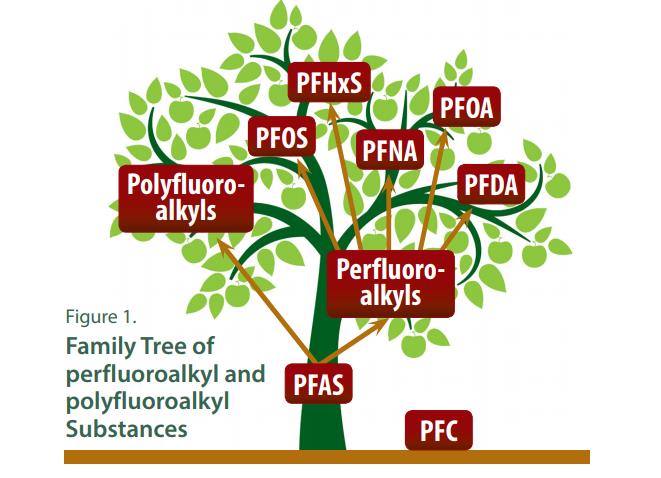What’s All This Talk About PFAS?
Print this Article | Send to Colleague
 |
|
| Frank Franciosi |
Those of you who get recent news from Google News and the various RSS feeds may have come across articles on PFAS (polyfluoroalkyl substances). You may have received phone calls or inquiries on this topic from your customers and your local media.
This issue is challenging because we are in an environmental field, so it’s especially important to educate yourself and your staff on this issue.
Here's the link to the December 2018 Composting Collaborative webinar on PFAS.
What Are They?
PFAS are a group of man-made chemicals that have been manufactured and used in a variety of industries around the globe since the 1940s, including as stain repellents in fabrics and grease barriers in food packaging. Good evidence has emerged that exposure to some PFAS can lead to adverse human health effects, and while the use of certain PFAS has been phased out, many are actively used and can still end up in our compost. Chances are if you are taking in any man-made products, they may contain some levels of these compounds. Dupont and 3M were the major manufacturers of these substances. Some of the more common products where these substances can be found are fire-fighting foams, water repellents, carpet protectant and packaging. PFAS can accumulate in organic matter from various sources of feedstocks. PFAS are all around us in varying levels. Studies have found it in soils, food and drinking water.

What is the Compostable Products Industry’s Response to This?
Rhodes Yepsen, executive director of BPI (Biodegradable Products Institute), has stated that due to growing concerns around fluorinated chemicals, in 2017 the organization participated in working groups comprised of composters, municipalities and non-governmental organizations. BPI also hired an expert adviser to develop a path forward.
Fluorinated chemicals are used across several industries and are an effective, FDA-approved “grease-proofing” barrier used on some paper and molded pulp food packaging. Most BPI-certified products do not contain fluorinated chemicals, but instead achieve water and grease barriers using compostable biopolymers like PLA (polylactic acid), PBAT (polybutyrate adipate terephthalate), PBS (polybutylene succinate), or PHA (polyhydroxyalkanoates), as well as compostable waxes. In November 2017, the BPI membership and board of directors voted to approve a total fluorine limit of 100 parts per million (ppm) in its certification, referencing the European standard EN13432, to address the entire class of chemicals. The organization followed this with a requirement of no intentionally added fluorinated chemicals. BPI-certified products not meeting the 100 ppm total fluorine requirement and/or intentionally using fluorinated chemicals must be phased out of the marketplace by the end of 2019.
So How Do We Respond?
USCC began discussing this more than a year ago before all the “popular science” news articles began appearing, and we are concerned about the appropriate reaction and regulation in response to this. Compost is not the only place where PFAs have an impact; they are in wastewater, landfills and groundwater as well. But, receiving the attention as the environmental choice for organics management, it is tempting for regulators to over-regulate the industry without sound science to back up potential restrictions. As the carbon-sequestering choice for organics management, we have to insist that all impacted industries be regulated equally, and that our voice must be heard before regulations are put forward that risk doing more harm to our industry than the science justifies.
Things You Can Do
- Get informed and stay involved; formulate your own talking points after educating yourself so you are comfortable in responding to customers and stakeholders
- Support research
- Demand that regulations do not move ahead of science
- Demand that PFAS be eliminated from products
- Continue to promote the benefits of re-use and recycling of residuals through composting and compost use

